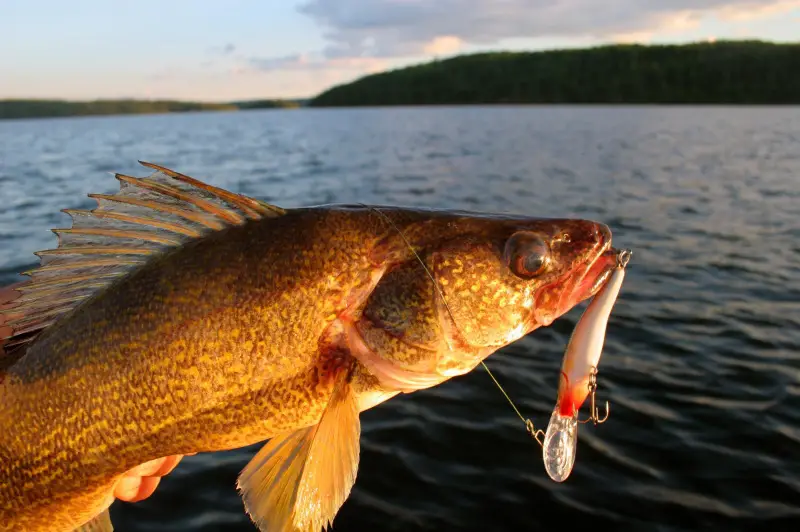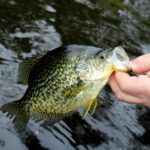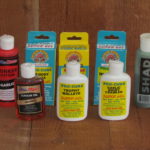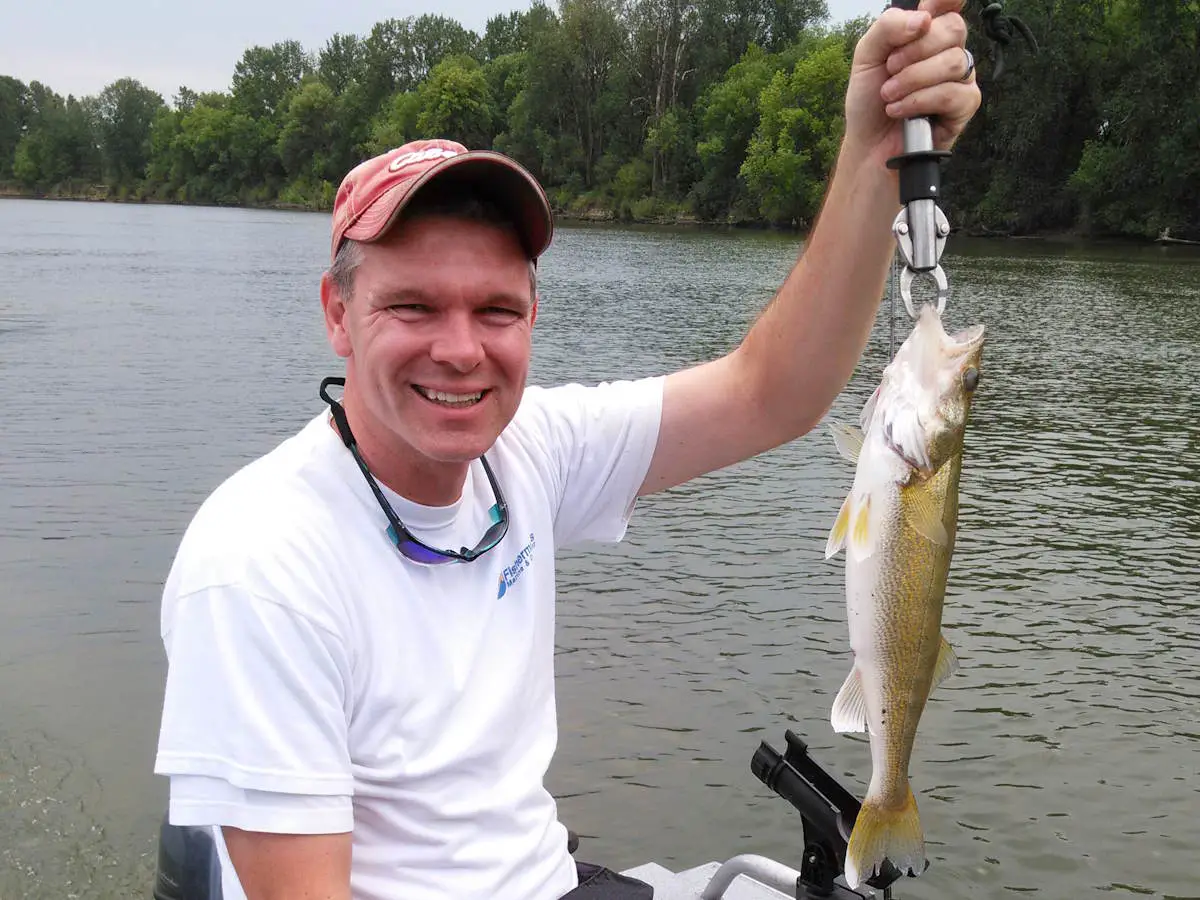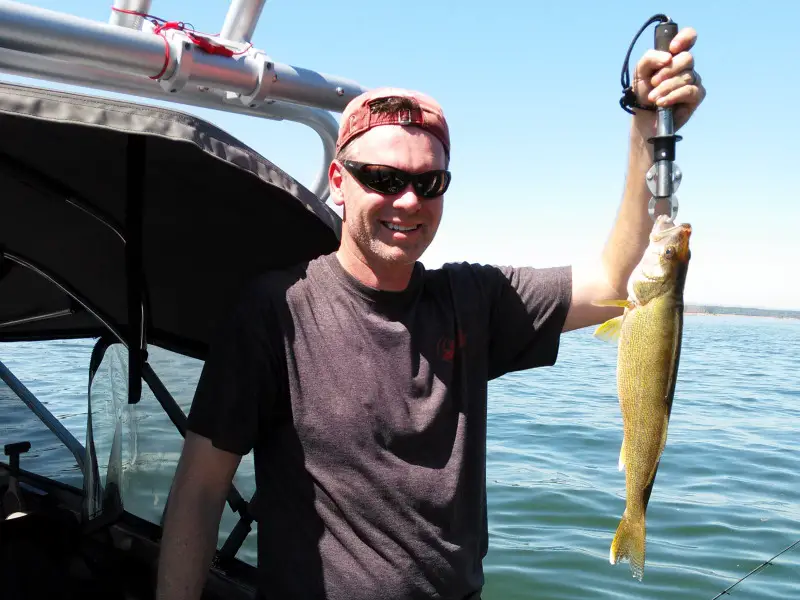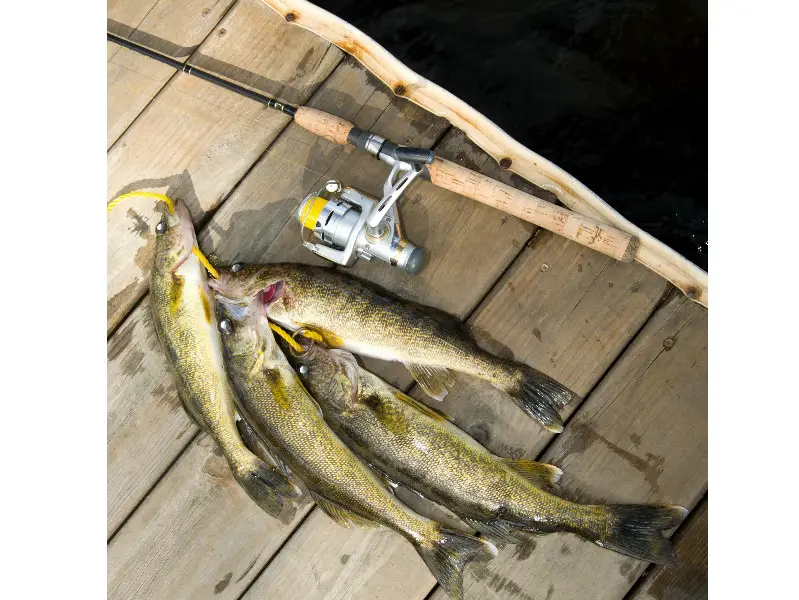Walleye are a highly sought-after freshwater fish that can be elusive to locate and difficult to land. They are known for their fighting spirit and make an excellent meal. Their evasive behavior often leads anglers to wonder if walleye specifically are line shy by nature.
Walleye can be line shy, but this trait has more to do with their general characteristics, feeding patterns, and prey behaviors. Using the right gear at the right time of day is essential to locating and hooking walleye.
This article will explain the walleye’s behavior and physical characteristics that make them more elusive than other freshwater fish. I’ll also share some tips for finding the best location to catch walleye and the right line to avoid scaring them away from the bait.
Characteristics That Impact Whether Walleye Are Line Shy
The disciplined angler can appreciate fish species’ differences and understand what makes them tick. Successful anglers genuinely understand the biology behind species behavior and leverage that understanding to their advantage.
Walleye Vision and Light Sensitivity
According to the Minnesota Department of Natural Resources, which manages resources in an outdoors person’s paradise where the walleye is a native fish species, the opalescent eye that is the species’ namesake plays a significant role in their behavior. For more information on the appearance of these fish, check out my article on what walleye look like.
Walleye have a sensitivity to light and excellent vision in low-light circumstances. Their adaptation helps them hunt for food since they are a predator species, but this characteristic also makes walleye more line shy than other fish.
Consequently, they can see specific types of lines at greater depths than other fish species. Weighing this characteristic when choosing a fishing line is critical to walleye fishing success.
Main Diet and How Walleye Feed
Walleye are a prey species that rely heavily on smaller fish to make up most of their diet. They use their superior vision in low-light settings to their advantage when feeding.
Low-light situations could include early dawn and dusk, an overcast day, a shady cove in the late afternoon, or murky, choppy water. Since species with poorer vision can’t easily detect walleye as they approach to feed, these conditions are the best for you to fish for them.
Game And Fish Magazine tells us that walleye are most prevalent in the murkiest water in the area since it makes hunting for their own prey easier. Remember one key concept: given their vision, if you can see walleye, they know you’re there and may be less inclined to feed on anything unfamiliar.
Applying This Knowledge of Walleye Characteristics and Diet
Bringing all of this knowledge together is where the magic happens. Before heading to the lake, you want to consider many things, including the following:
- Gear
- Bait (including scents)
- Your approach to fishing
- Conditions
- Time of day
Let’s take a closer look at these factors below.
Choose the Right Gear for How You Will Fish
Now that we know about the superior vision of walleye, we need to determine which fishing line is the best choice for anglers hoping to reel in a big catch.
The way you’re fishing will determine your most appropriate line and leader choice. If you’re unsure of the kind of fishing you’ll be doing, it might help to view this comprehensive YouTube tutorial on ways to fish for walleye and the associated line by Review Your Gear:
Top sources share that walleye can see braided fishing lines unless it is used when trolling for fish rather than cast fishing. Removing braided line as an option leaves fluorocarbon or monofilament line as your best substitution, according to Review Your Gear.
I recommend Sufix Elite 8 lb line, sold on Amazon.com. It’s clear, has superior break strength for wary and feisty walleye, and is designed to eliminate line memory for an outstanding cast every time.
Another excellent option is RUNCL PowerFlouro Fishing line, also found on Amazon.com. It is a nearly invisible fishing line that is fully fluorocarbon-coated. It has excellent sinking properties to quickly and naturally get your bait down to depth.
Consider Conditions and Time of Day
As a light-sensitive fish species, walleye tend to lay low on sunny, clear days. As a result, this weather, while pleasant, isn’t typically ideal for catching them. If you’re walleye fishing in the warm summer months when days are longer and brighter, consider starting your adventure very early or getting out on the water at or around sunset.
You should also be aware of when the spawning season for walleye occurs. To learn more about this, take a look at my comprehensive guide to walleye spawning.
When the daylight dims, walleye become more active because this is when they are comfortable feeding. A predator fish, the species’ low-light vision gives walleye a distinct advantage over the fish species that are their primary food source.
With such remarkable vision, walleye can be both line shy and boat shy. Cast far away from your vessel when fishing from a boat or kayak. This helps prevent the fish from associating the bait with humans.
Also, avoid loud, clunky movements in your boat in the area where you plan to fish. Be as prepared with your gear as possible before you arrive at the location where you plan to fish for walleye. By preparing ahead of time, sounds and reverberations from your actions above water won’t put their guard up underwater.
Choppy, wavy days on the lake are often the best conditions for catching walleye. The motion of the water can churn up sediment and bring the elusive fish out of their hiding spots. Choppy water also helps to mask sounds and actions on the surface that can startle or spook the fish.
Conclusion
Walleye can seem finicky, erratic, and downright temperamental at times. Still, easily caught fish aren’t as rewarding as fish that requires planning, research, appropriate gear, and waiting for the right conditions.
Take the time to talk strategy and gear with other anglers when you’re out. Ask what they’re fishing for and if they’re having any luck. Friendliness and humility could land you the best local knowledge around.
Keep trying new gear combinations with varying weather and water conditions, too. The more time you spend on the water, the more you’re able to test different equipment under variable water visibility.
